ResourceType
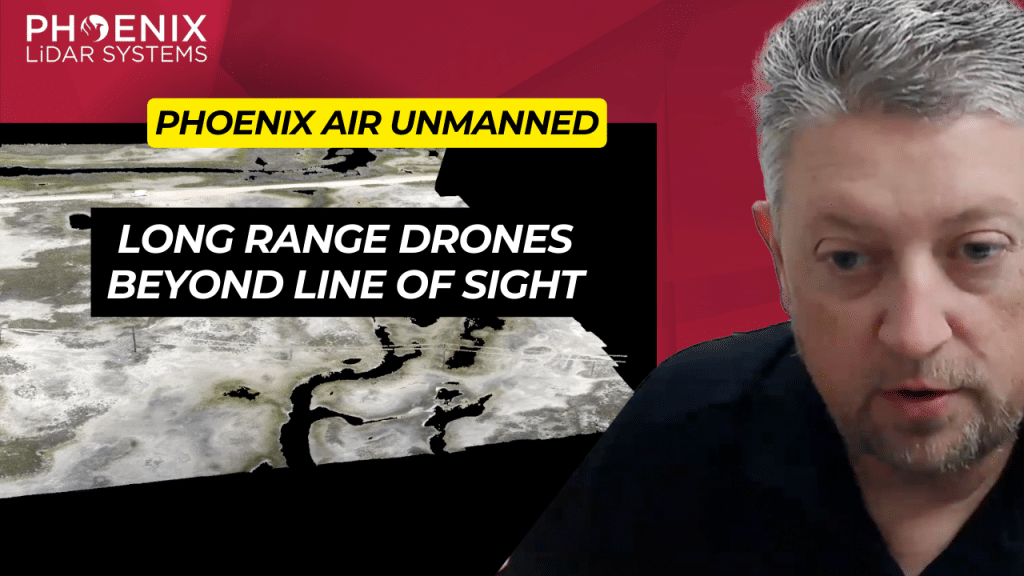
Explore the cutting-edge world of drone operations with Phoenix Air Unmanned, a leader in the industry known for its advanced use of LiDAR technology and dedication to safety and innovation.
This video provides an in-depth look at how Phoenix Air Unmanned, a subsidiary of Phoenix Air Group, is revolutionizing drone applications with state-of-the-art technology, including the Phoenix LiDAR Systems Ranger UAV.
Discover how their Beyond Visual Line of Sight (BVLOS) capabilities allow for efficient data acquisition over vast terrains, making them a key player in sectors like utilities for vegetation management and disaster response.
Learn about their diverse services that cater to multiple industries, their rapid data gathering capabilities that outpace traditional methods, and their prowess in creating detailed 3D models for enhanced analysis and decision-making.
The video also highlights the LiDARMill, an innovative online processing suite that simplifies LiDAR data processing, demonstrating Phoenix Air Unmanned’s commitment to pushing technological boundaries and delivering exceptional results across various sectors.
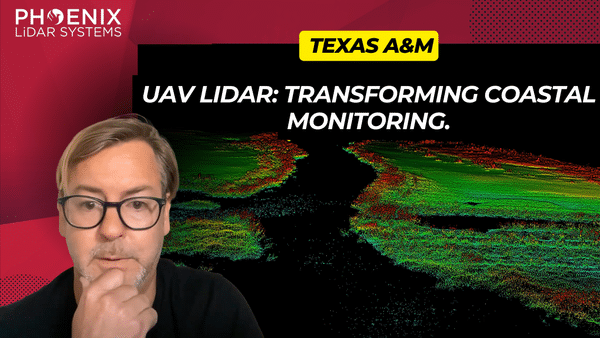
This video presents a detailed comparative analysis of two leading LiDAR sensors, the VUX and Avia, within the geomatics sector. Focusing on their performance in capturing precise vegetation and terrain data, the video highlights the VUX sensor’s superior precision, energy penetration, and pulse rate, making it ideal for challenging environments like dense forests.
The research also explores the integration of unmanned aircraft systems (UAS) with LiDAR technology, showcasing the potential of the Riegl Vux 1LR and Live OXAVIA sensors. Key insights include the Department of Transportation’s interest in UAS for crash scene reconstructions and surveying, illustrating the need for efficient data collection methods.
Phoenix LiDAR Systems is featured for its advanced UAS LiDAR solutions and Spatial Explorer Pro software, emphasizing the increasing importance of LiDAR technology in geomatics, especially for environmental applications like wetlands where accurate elevation data is crucial.

Discover the future of forest analysis with drone and LiDAR technology in this video. Led by Evan Braubin, an associate professor at the University of Florida, the GatorEye research program is revolutionizing how we study forests. Using the Harris Aerial H6 platform and the high-resolution GatorEye XTR system, drones equipped with LiDAR and hyperspectral sensors provide unparalleled insights into forest structure and species distribution.
The video highlights the integration of sensor fusion, combining visual, auditory, and temperature data for a comprehensive understanding of the forest environment. Learn about the Phoenix SpatialExplorer algorithm, which enhances data density and accuracy by meticulously calibrating flight parameters.
Braubin’s collaboration with Phoenix LiDAR has propelled his research, developing advanced systems like the OrkCS and Orca CS ground stations. This innovative approach is transforming forest analysis, uncovering the intricate impact of vegetation on animal movement and distribution.
Explore the groundbreaking advancements in remote sensing and forest analysis in this video, featuring keywords such as LiDAR technology, drone sensor fusion, GatorEye, hyperspectral sensors, Harris Aerial, and Phoenix SpatialExplorer. Welcome to the future of forest analysis!
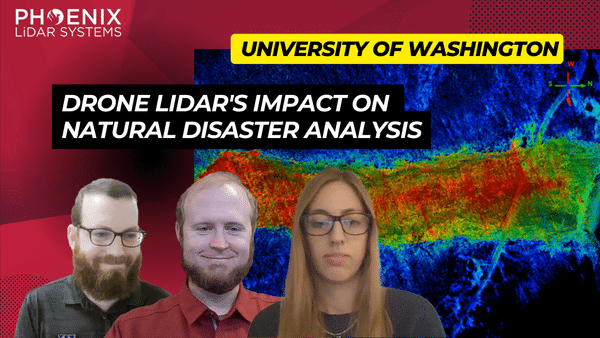
In the ever-evolving world of technology, LiDAR (Light Detection and Ranging) has emerged as a groundbreaking tool, especially in the realm of natural disaster research. The RAPID Facility, an integral part of the Natural Hazards Engineering Research Infrastructure (NERI) network, has been at the forefront of harnessing this technology. Their mission? To support researchers in collecting invaluable data on natural disasters, offering insights that were previously unimaginable.
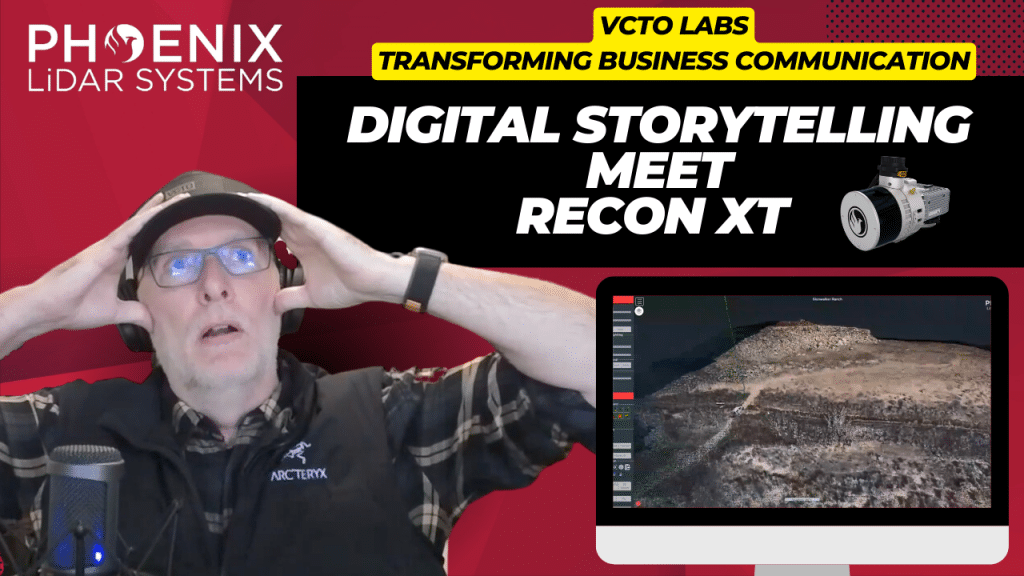
Join Pete Kelsey, owner of VCTO Labs, as he showcases the transformative power of 3D virtualization and LiDAR technology in storytelling. This video highlights Pete’s expertise in creating visually stunning 3D models of historic sites like Easter Island and the USS Arizona. By integrating LiDAR with GNSS, Pete crafts detailed digital representations of physical assets, bringing data to life.
Featuring the Recon XT GNSS LiDAR system mounted on the DJI M300 drone, this video demonstrates how Drone LiDAR technology captures intricate details from above, creating immersive narratives. Pete’s collaboration with Phoenix LiDAR provides the cutting-edge hardware and software that make these projects possible.
One standout project is Skinwalker Ranch in Utah, where Pete uses LiDAR to create a digital twin of the site, offering precise measurements and virtual tours of this enigmatic location. Pete’s dedication to his craft and partnership with Phoenix LiDAR exemplify his commitment to excellence and innovation.
Explore the world of 3D virtualization and LiDAR technology with Pete Kelsey and VCTO Labs. For more information and to connect with the community, visit vcqlabs.com. Welcome to the future of storytelling through 3D models and LiDAR.

The Centralia Coal Mine in Centralia, WA, ceased operations in 2006 and is now undergoing an extensive reclamation process. A portion of the 9,800-acre site has been repurposed by Seattle’s First Mode as a proving ground for the world’s largest hydrogen-powered mine haul truck. Utilizing the Phoenix LiDAR RECON-XT, First Mode is conducting detailed 3D surveys to build and test a 10% grade haul road, essential for the truck’s performance. This innovative use of reclaimed land exemplifies how former industrial sites can be transformed into high-tech testing grounds, highlighting the synergy between environmental restoration and cutting-edge technology.
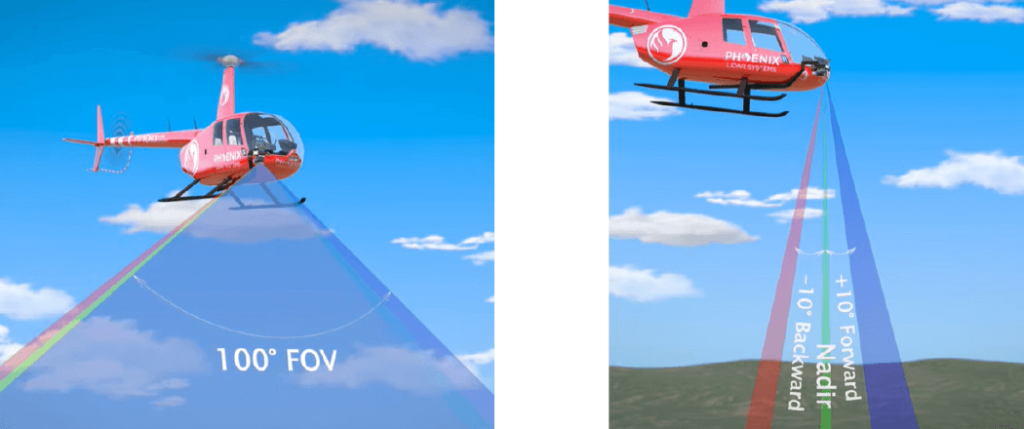
Discover the comprehensive guide to selecting the right LiDAR system with our detailed LiDAR Selection Guide. This article covers everything from the basics of LiDAR technology to in-depth comparisons of current scanners. Learn about the technical specifications, platform configurations, and software considerations essential for optimizing your LiDAR mapping projects.
Whether you are in forestry, construction, or surveying, our guide provides the insights needed to choose the best LiDAR solution for your needs. Read on to understand the advantages of UAV LiDAR, the components that make up a LiDAR system, and how to achieve high precision and accuracy in your mapping endeavors.
Phoenix LiDAR System offers survey-grade LiDAR systems for a variety of industries and applications.

Tropical savanna ecosystems play a critical role in the global carbon cycle, but their ability to store and sequester carbon is uncertain due to the combined effects of anthropogenic activities and climate change. This study explores the potential of UAV LiDAR technology for accurate 3-D mapping of aboveground biomass (AGB) in the Brazilian Savanna (Cerrado).
By assessing five regression models using field sample plots, the research identifies the most effective model for estimating AGB across forest, savanna, and grassland formations. Results indicate that UAV LiDAR can significantly enhance biomass estimation, with notable accuracy across different vegetation types, although further development is needed for grassland biomass estimation.
These findings provide essential data for carbon emission mitigation strategies and support integrated fire management in tropical savanna ecosystems.
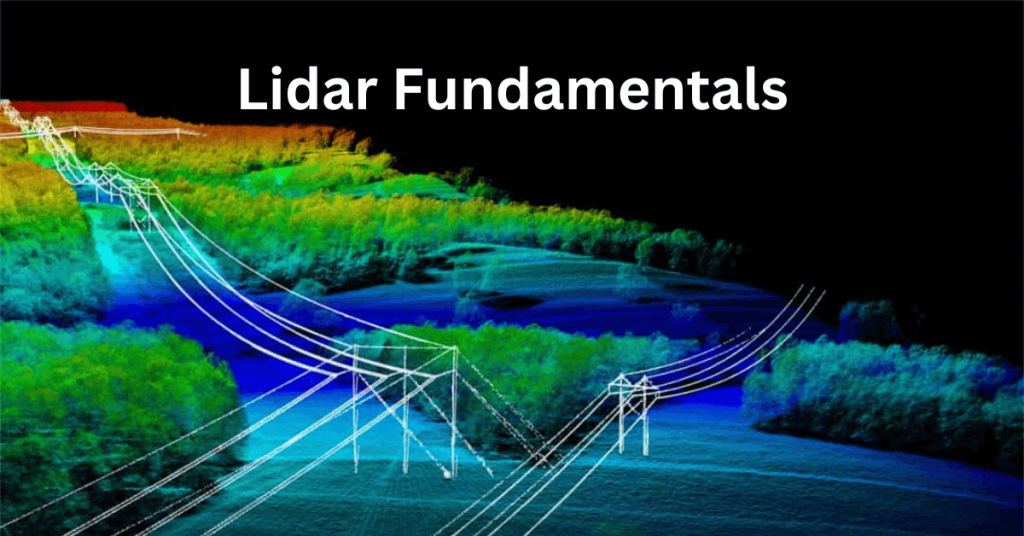
Understanding LiDAR
LiDAR 3D mapping is a versatile technology that surpasses passive sensing methods like photogrammetry by penetrating vegetation and operating effectively in low-light conditions. As a more applicable and user-friendly technology, LiDAR provides data that is quicker and easier to process. Phoenix LiDAR’s aerial solutions enable faster and more consistent area scanning compared to traditional ground scanning technologies, whether terrestrial or mobile mapping methods are used.
This section is designed to educate our customers and the public about LiDAR, highlighting the unique and innovative aspects of our solutions for a wide range of applications. Discover how Phoenix LiDAR sets the standard for efficiency and accuracy in 3D mapping.
LiDAR, short for Light Detection and Ranging, is an advanced remote sensing technology used across a wide range of applications. Utilizing pulsed laser light, LiDAR measures distances through vegetation to the Earth’s surface, capturing precise surface data by calculating the time it takes for the laser pulses to return to their source.
To operate effectively, LiDAR systems require four essential components:
- The LiDAR Unit: This device emits pulses of light and, when mounted on a UAV, scans a predefined swath below.
- GPS Receiver: Tracks the unit’s x, y, z coordinates for precise location data.
- Inertial Measurement Unit (IMU): Monitors the unit’s tilt in space to ensure accurate elevation measurements.
- Computer: Records and processes all transmitted data.
These light pulses, capable of producing multiple returns, are processed alongside other system data to generate highly accurate three-dimensional information about the scanned surface. This powerful combination of technologies makes LiDAR an invaluable tool for producing detailed and reliable 3D mapping data.
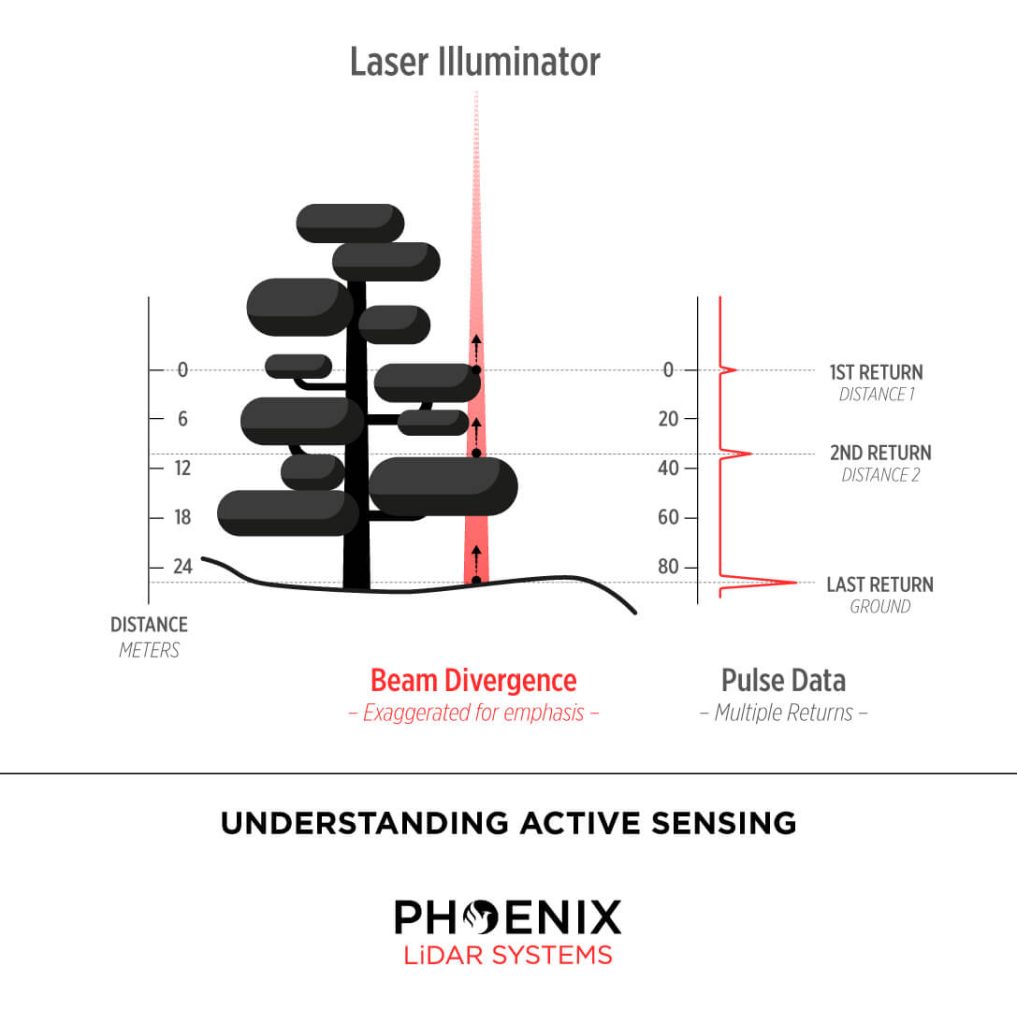
How Does LiDAR Work?
The technique we employ to achieve centimeter-level precision is Real Time Kinematic Global Navigation Satellite System (RTK GNSS). This system enhances the satellite signal’s carrier wave along with the information content, relying on a single GNSS reference station for real-time corrections. During short GNSS outages, the Inertial Navigation System (INS) steps in.
The INS uses a computer, accelerometers, and gyroscopes to continuously calculate the system’s position, orientation, and velocity. To combine these systems, a sophisticated algorithm called linear quadratic estimation (LQE) processes streams of noisy sensor data, producing an optimal estimate of the system’s position at any given time. By fusing this information with the LiDAR data, a point cloud is generated and visualized in real-time using Phoenix Aerial SpatialExplorer.
In scenarios where real-time corrections from the GNSS reference station are unavailable or prolonged outages occur, the third-party software Inertial Explorer™ can produce a precise trajectory in post-processing. Both real-time INS-generated trajectories and post-processed trajectories from Inertial Explorer™ can be fused with LiDAR data using Phoenix Aerial SpatialFuser to create point clouds in LAS format.
Phoenix Aerial LiDAR solutions are designed to attach to almost any vehicle, with flexible software to match. By separating sensor control from the user interface, multiple mapping options become possible:
Aerial Mapping Phoenix Aerial LiDAR solutions can be mounted on various vehicles such as UAVs, gyrocopters, and fixed-wing aircraft. Typically, the operator remains on the ground, connected to the GNSS reference station. Using Phoenix Aerial SpatialExplorer software, correction data is transmitted to the Rover via a long-range WiFi system. The Rover fuses this data in real time and transmits a down-sampled point cloud back to the operator.
Ground Mapping When traveling with the Rover in a car, boat, or ATV, the operator can connect directly to the Rover using WiFi or an ethernet cable. Correction data is transmitted from the GNSS reference station to the SpatialExplorer software via long-range WiFi or a public IP address (using 3G/4G). With an onboard 240 GB SSD hard drive, the operator can scan for up to 6 hours without needing to stop for data downloads.
Real-time Point Cloud Advantages Real-time point cloud visualization offers several key benefits:
- Immediate Results: Operators can instantly determine if the results meet expectations, avoiding the time-consuming and costly process of post-flight adjustments.
- Real-time Navigation: The growing point cloud can be visualized on a computer screen in real time, allowing the operator to identify unscanned areas and quickly alter the UAV’s course.
- Remote Collaboration: Through a 4G network, operators can share their screen with clients in real time to confirm or adjust the LiDAR point cloud.
Phoenix Aerial LiDAR solutions provide unparalleled flexibility and precision, making them an essential tool for various mapping applications. Whether for aerial or ground-based operations, our technology ensures high-quality, accurate data collection and real-time processing capabilities.
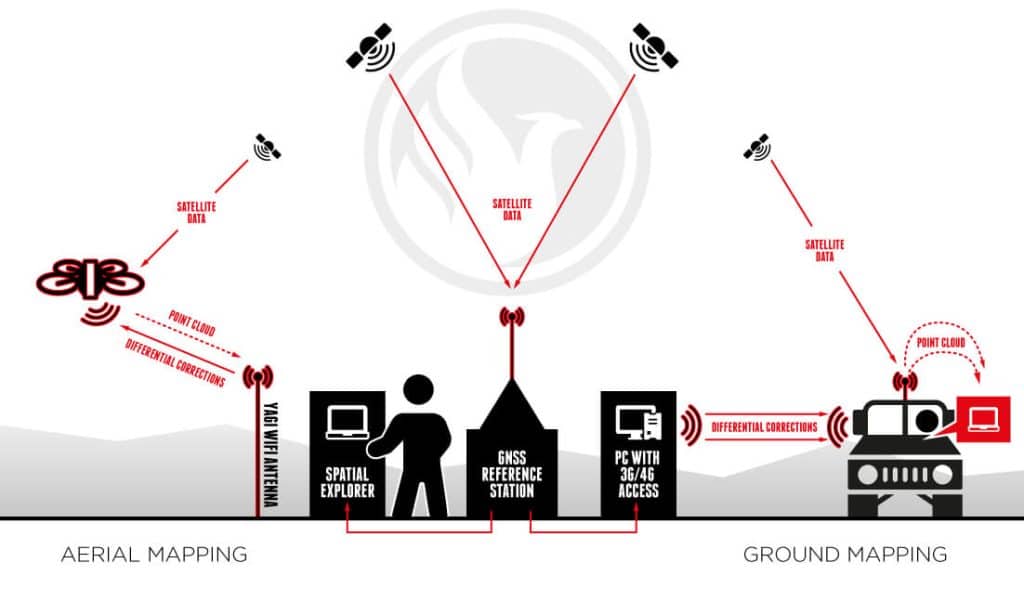
Parameters for LiDAR Scanning Via UAV
Phoenix LiDAR Systems builds systems meant for mobile mapping. Surveying from a moving object is accompanied by certain parameters an operator must take into account: speed, scan area, altitude, frequency, pulse rate, scan angle and point density all play an integral role in capturing data. Note that you will obtain a scan swath of varying ranges and densities depending on these parameters. Actual accuracy is dependent on GPS processing options (RTK, PPK, WAAS), ionospheric conditions, satellite visibility, flight altitude (AGL) and other factors.
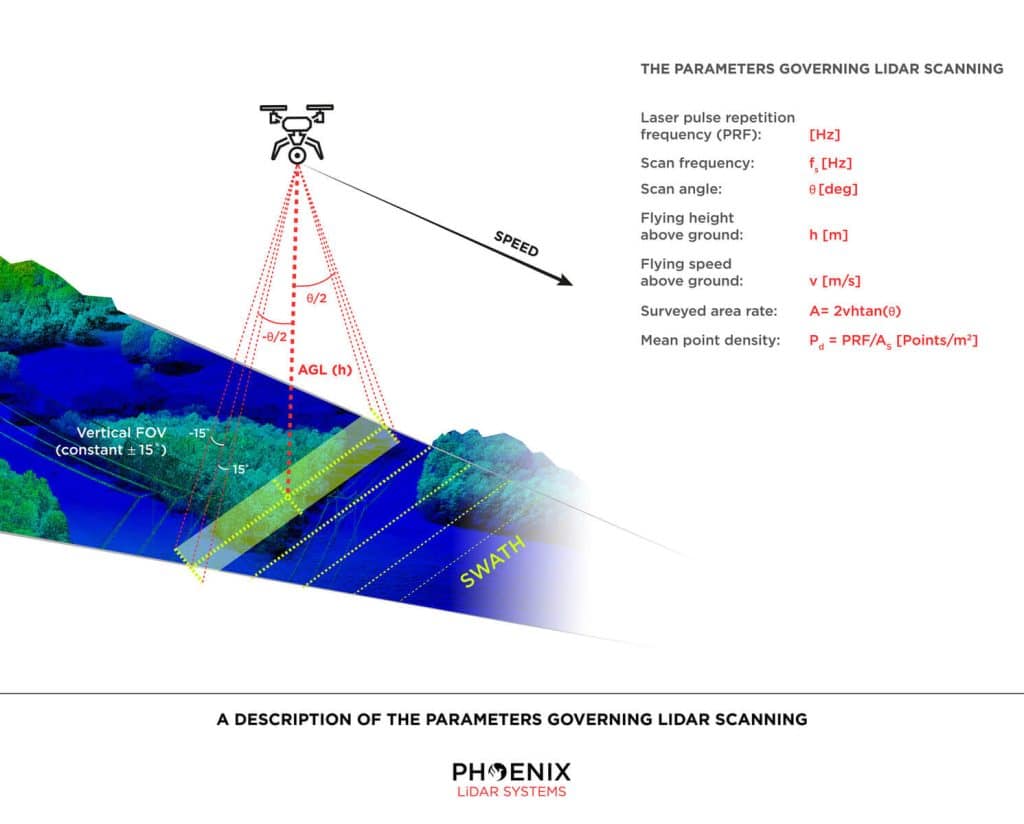
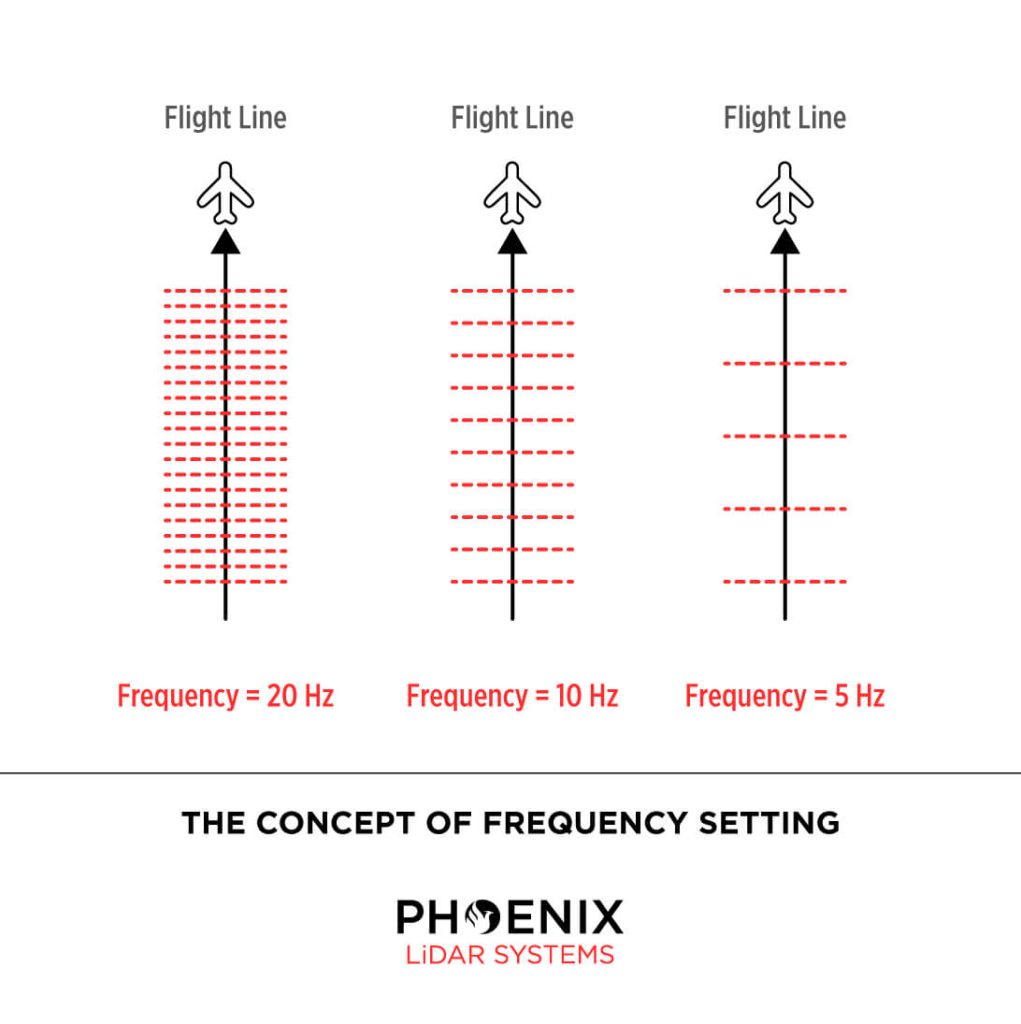
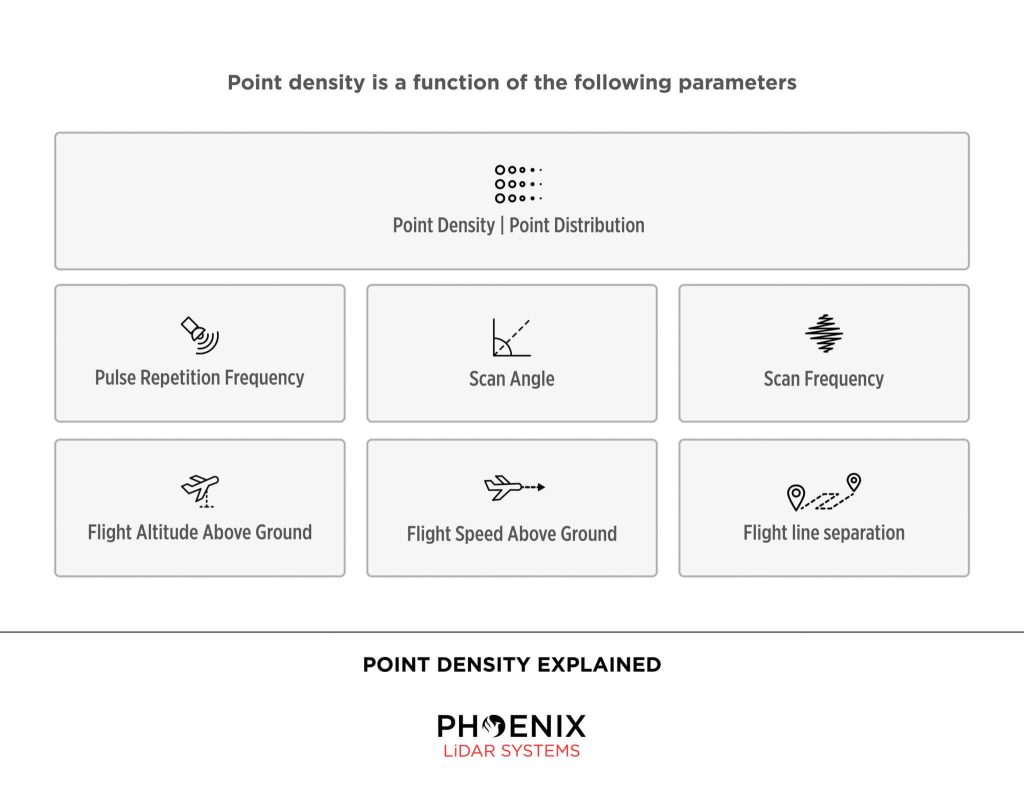
Phoenix LiDAR Workflow
Real-time vs Post Processed
In RTK (Real Time Kinematic) mode, about 500 bytes of differential corrections are sent from the reference station to the rover about once every second. Applying these corrections, the rover is able to solve its position with centimeter-accuracy.
The differences between RTK mode and post-processing are:
- post-processing requires extra software
- post-processing does not require a real-time connection between reference station and rover
- post-processing will often compute more accurate results, especially in environments with bad satellite visibility (ground scanning)
- post-processing allows the user to better judge the solution’s accuracy
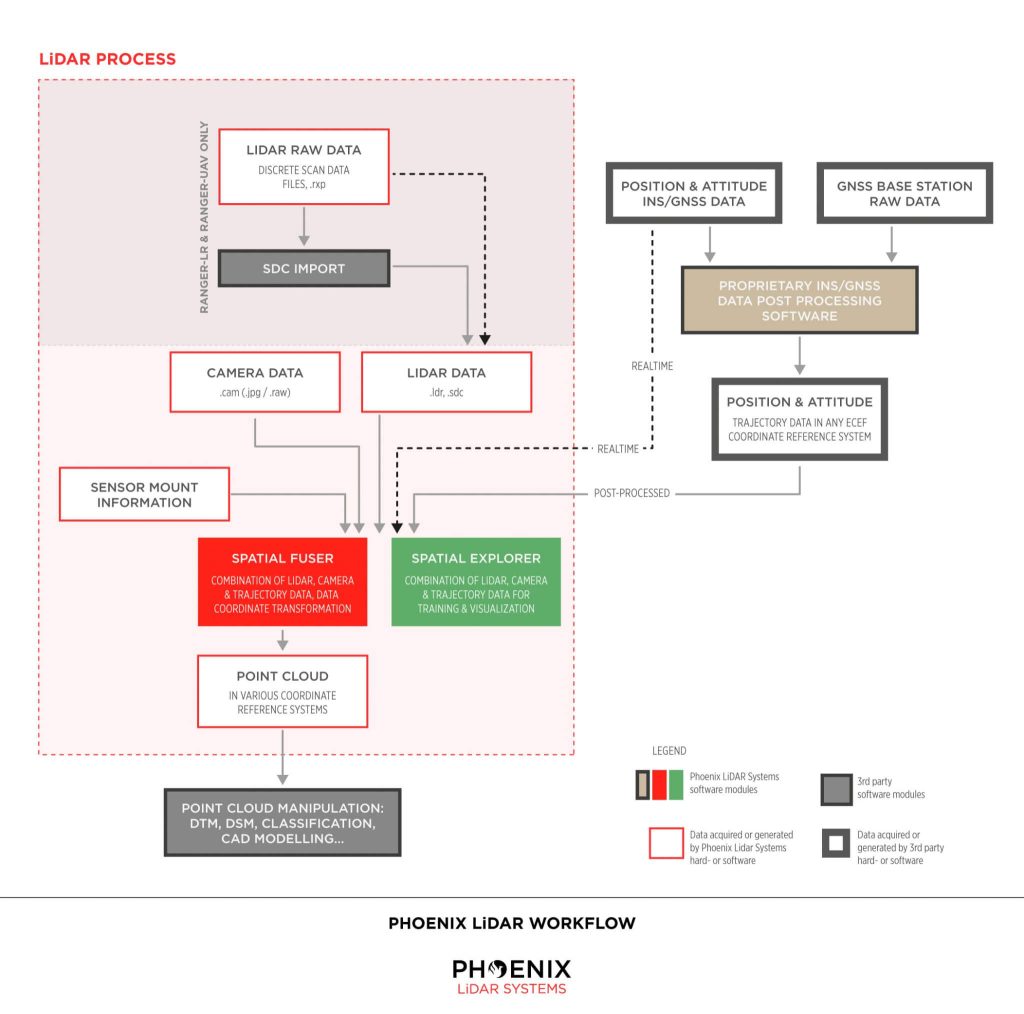
Need More Help?
We understand that LiDAR technology can be overwhelming. Don’t worry. We’re here to help. Contact us Monday – Friday, 9am – 5pm PST.
+1.323.577.3366